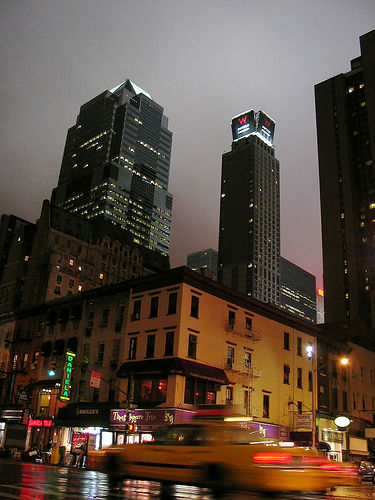New York City: lessons or a matter of interpretation?
 Photo by FunkandAmis, via Flickr.
Photo by FunkandAmis, via Flickr.There are two books out right now about Rudy Guiliani, one I have mentioned before, is called Prince of the City: Giuliani, New York and the Genius of American Life, a book that argues that Giuliani brought New York out of the low point of its history. It's by Fred Siegel, author of the excellent and still controversial book about cities, entitled The Future Once Happened Here.
The other book is edited by Rob Polner, who covered the mayor for Newsday, has brought together a group of 25 writers (including Jimmy Breslin, Jim Dwyer, LynNell Hancock, Luc Sante, and Kevin Baker) to contribute chapters for a book entitled America’s Mayor: The Hidden History of Rudy Giuliani’s New York. It examines various aspects of the Giuliani administration critically, finding the former mayor (in Polner’s words) “his own worst enemy and the city’s as well.”
Gotham Gazette, the website of the Citizens' Union Foundation, conducted an interview with the authors, who disagree greatly about the Giuliani legacy. One thing that Siegel said that does resonate, having to do with crime is this:
Dinkins was firmly wedded to the notion of the root cause of crime, that if you don’t reduce poverty you don’t reduce crime. The trouble is the causation works more the other way -- that crime causes poverty, rather than the other way around. If I want to map high poverty areas of the United States, I map the riots in the 1960s. With very few exceptions, none of those areas have recovered, or are just now recovering. So, violence is deadly for cities because it takes away the city’s greatest asset. The city’s greatest asset is public space. If you can’t enjoy public space then you might as well live in suburbia. If you don’t reduce crime you might as well tell people, “you want a better life, leave.”
Check out the interview "Giuliani – Savior Of The City, Or Its Enemy?" And the entry "Urban Health, Nasty Cities, Broken Windows, and Community Efficacy," in the April archives of the blog.



0 Comments:
Post a Comment
<< Home